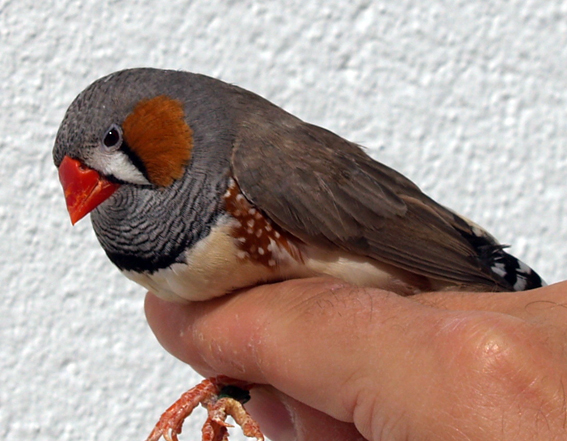Some organisms can modulate gene expression to trigger physiological responses that help adapt to environmental stress. The synthesis of the pigment pheomelanin in melanocytes seems to be one of these responses, as it may contribute to cellular homeostasis. Environmental oxidative stress was experimentally induced in male zebra finches Taeniopygia guttata by the administration of the herbicide diquat dibromide during feather growth to test if the expression of genes involved in pheomelanin synthesis shows epigenetic lability. As pheomelanin synthesis implies decreasing the availability of the main cellular antioxidant (glutathione), it is expected to cause oxidative stress unless a protective mechanism limits pheomelanin synthesis and thus favors the antioxidant capacity. However, diquat exposure did not only improve the antioxidant capacity of birds, but also upregulated the expression of a gene (AGRP) that promotes pheomelanin synthesis in feather melanocytes, leading to the development of darker plumage coloration. No changes in the expression of other genes involved in pheomelanin synthesis (Slc7a11, Slc45a2, MC1R, ASIP and CTNS) were detected. DNA methylation levels only changed in MC1R, suggesting that epigenetic modifications other than changes in methylation may regulate AGRP expression lability. These results suggest that exogenous oxidative stress induced a hormetic response that enhanced their oxidative status and, consequently, promoted pheomelanin-based pigmentation, supporting the idea that birds adjust pheomelanin synthesis to their oxidative stress conditions. información[at]ebd.csic.es: Rodríguez-Martínez & Galván (2019) A source of exogenous oxidative stress improves oxidative status and favors pheomelanin synthesis in zebra finches. Comp Biochem Phys C https://doi.org/10.1016/j.cbpc.2019.108667
https://www.sciencedirect.com/science/article/abs/pii/S1532045619303837

 Las altas temperaturas están provocando que las lagunas y las marismas de Doñana pierdan agua rápidamente
Las altas temperaturas están provocando que las lagunas y las marismas de Doñana pierdan agua rápidamente




